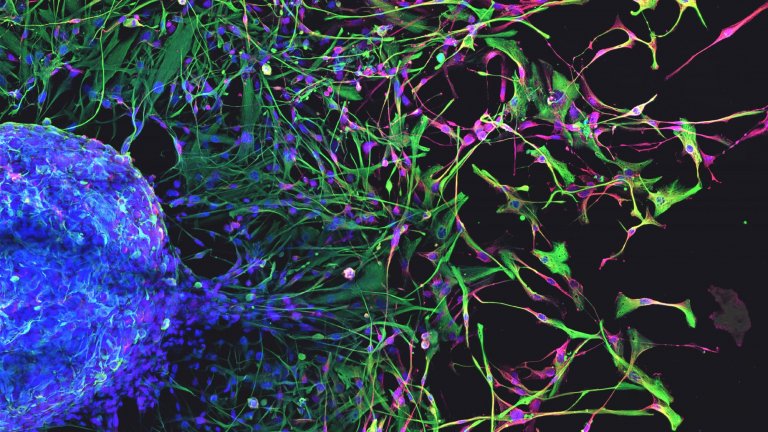
© Caroline DELMAS / Laetitia LIGAT / CRCT / CNRS Images
View the mediaFolder
The brain is an extraordinary area of exploration for scientists. While its complex organisation, function and plasticity are partially known, the brain still holds many mysteries that neuroscientists are keen to unravel.

© Caroline DELMAS / Laetitia LIGAT / CRCT / CNRS Images
View the mediaAlthough the morphology and functioning of neurons are well known nowadays, the discovery of new cell types in the nervous system has called their major role into question. For a long time, glial cells, which include astrocytes, were considered as simple supports for neural functioning. We now know that they work closely with neurons and are actively involved in the modulation of emotions, reduce anxiety and also play a role in the immune defence, repair and healing of the brain!
At the same time, many studies are trying to identify the role and functional sub-regions of different brain structures, as well as how they are interconnected. By mainly conducting behavioural tests on different animal models (mice, bees, fruit flies, ants) and even on humans, scientists are identifying which structures are involved in learning, remembering, language, motor skills and decision-making.
The current level of knowledge has led to applications in various fields, for example the development of brain-machine interfaces (remote control of computers, controlling prostheses, etc.) or the development of training to optimise sports performance. But many mysteries have yet to be solved: what is intelligence? What is consciousness? Will we be able to cure neurodegenerative diseases someday? Will we be able to decipher the neural code, the hypothetical language used by neurons to communicate with each other? Neuroscience still has a lot to teach us.
Discover in pictures an overview of the neuroscience research undertaken in the CNRS laboratories.
Key words: astrocyte, animal model, brain, cognition, intelligence, learning, neuron, neuroscience
Our work is guided by the way scientists question the world around them and we translate their research into images to help people to understand the world better and to awaken their curiosity and wonderment.